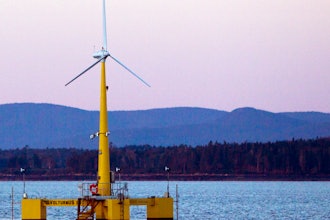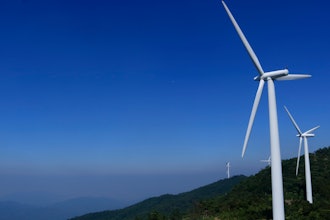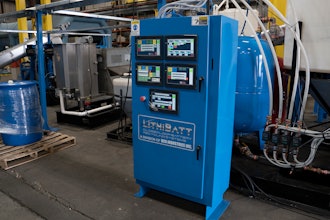LOS ANGELES (AP) — Executives for the company that operates the shuttered San Onofre nuclear power plant sketched a future Wednesday in which one of the twin reactors restarts by summer then produces electricity after an on-off trial period for possibly years to come.
The plant between Los Angeles and San Diego has been idle since January 2012, after a small radiation leak led to the discovery of unusual damage to hundreds of tubes that carry radioactive water.
A tentative proposal to restart the Unit 2 reactor at reduced power, perhaps as soon as June 1, is the center of a fierce battle between Southern California Edison and anti-nuclear activists who warn that running the plant at any power level is an invitation for disaster.
Edison officials are finalizing a proposal that would change the seaside plant's operating rules to permit the single reactor to run at no more than 70 percent power, which company engineers believe will limit excessive tube wear that sidelined San Onofre more than a year ago.
At a meeting in Maryland, Nuclear Regulatory Commission staff told Edison officials the company's June 1 target date might be out of reach, given the complexity of a proposal that comes with reams of technical paperwork.
Any plan to restart San Onofre requires NRC approval.
Before a restart could take place, the company would also have to meet a series of steps outlined by federal regulators last year. A decision on whether Edison has met that threshold is not expected until May or June.
Company officials are also preparing long-range plans under which the plant might run for years, even though some of Edison's own research has suggested tube damage could cut short its life span.
Precise projections about the future are dependent on a restart — Edison engineers need to study how the reactor behaves at 70 percent power before being able to sharpen longer-range calculations.
The plant could be started then shut down, as many as five times during a trial run to assess its operation and safety.
"To propose an experiment in which the damaged reactor is repeatedly turned on and off shows a disgraceful contempt for public safety," said Kendra Ulrich, a spokeswoman for the anti-nuclear group Friends of the Earth.
A key issue is whether the NRC will agree with Edison's plan to cap Unit 2's capacity at 70 percent, technically known as a license amendment, down from the now-required 100 percent.
An earlier Edison analysis concluded the reactor could run at 100 percent power, but the research also found the risk of a tube break could reach unacceptable levels after 11 months.
Friends of the Earth and other anti-nuclear activists have accused the NRC of fast-tracking Edison's plans, while attempting to silence critics. Members of the public can request a hearing on the license amendment, but they point out that if NRC staff finds there is no significant hazard the hearing can be held after the amendment is approved, making it essentially meaningless.
The NRC has promised a transparent review, and Edison says safety is its top consideration. A team of industry experts has helped shape the company's plans.
The problems at San Onofre focus on its steam generators, which were installed in a $670 million overhaul in 2009 and 2010.
The future of the heavily damaged Unit 3 reactor, where the radiation leak occurred after a tube break last year, is not clear. Edison has said that because of manufacturing differences, Unit 2's generators did not suffer the extent of deep tube wear witnessed in its sister plant.
Decaying generator tubes helped push San Onofre's Unit 1 reactor into retirement in 1992, even though it was designed to run until 2004.
San Onofre is owned by SCE, San Diego Gas & Electric and the city of Riverside.






















